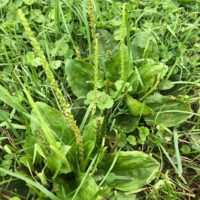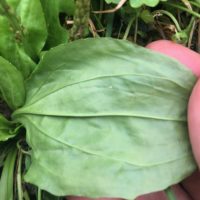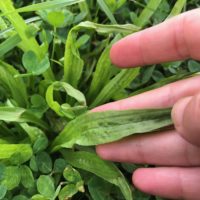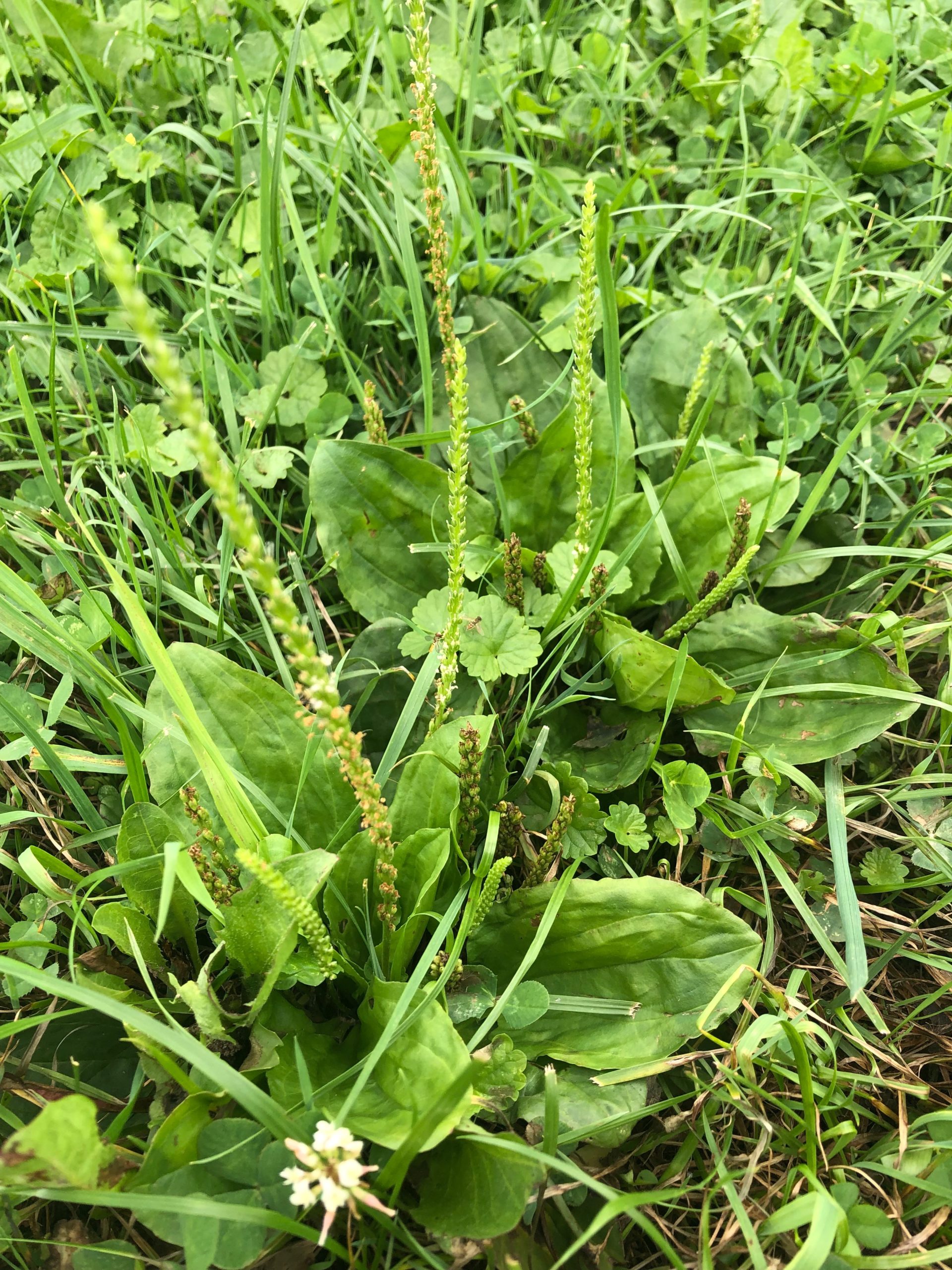Have you ever been away from home, outside and had to deal with a cut or bug bite? Wouldn’t it be so convenient to always have a remedy available that you don’t have to remember to pack? A few years ago I was watching my oldest son play baseball and my youngest son (who was 3 at the time) was running around and ended up with a cut on his leg. We grabbed a few plantain leaves, rinsed them and he chewed them up and covered his cut with the poultice – and then he went right back to running around and playing. This is why the first thing I do when I go anywhere outdoors is identify plantain (plantago) – this is nature’s first aid for cuts, scratches, slivers, bites, stings, etc. This is a very easy to identify plant that grows abundantly and is often found along paths and in our yards. Once you know it, you will see it everywhere (you’ll even find it buried under the snow). This plant is truly wanting to be of assistance to us.
The reasons plantain is my go to plant for minor first aid is simple:
- It is found abundantly in nature, from yards to fields to trails.
- It is easy to identify and locate.
- It is an all purpose plant – it helps with cuts, scratches, slivers, stings, bites, etc.
I’m not going to dive into tons of detail because there are many articles about plantain such as this one that will provide you with everything you need to know. But the basics are that it helps to draw – so it will draw out any dirt, debris, stingers and the itch, helping to stave off infection and gently heal wounds.
How to make a plantain poultice:
Once you have identified it (see pictures below), pick a few clean/healthy looking leaves and make a poultice. Chew the leaves up with lots of saliva until you get a paste and spread the paste (poultice) on the area. You can also blend with some water as an alternative. We have enzymes in our mouth that do help activate the plant so don’t be afraid to chew it up!
Please make sure you use healthy looking leaves, if possible far away from where cars park/drive and I like to walk off the path a bit since many people walk dogs along paths/walkways. If you have a bottle of water you can give the leaves a rinse.
Plantain comes in all sizes and if you are lucky enough to have some larger leaves available, you can make a bandage with them. Remove a leaf with stem, poke a hole in the leaf with the stem and place the leaf over the poultice with the stem poked through the hole to act as a bandage.
Identifying Plantain:
The first thing I do when I go anywhere is locate plantain. This is great practice and when the need comes up you will be able to identify it quickly.
There are two common types of plantain – broad leaf and narrow leaf. Either can be used. The broad leaf is easiest to identify thanks to the centre shoots that pop up with the seeds. Please note that plantain looks different when it is newly growing in the early spring so it is a great idea to identify new growth once you are able to easily identify it.
Here are some pictures with explanations to help you identify plantain. It is always great to double check with a plant app, internet search, plant guide or a person who is knowledgeable in plant identification. I feel like most people will find this plant to be common and familiar and have no issues finding it.

Plantain has seed stalks that shoot out the centre and look to be trying to get your attention!

The front of the leaves – they are thick and ribbed.

The back of the leaf -lighter green and more defined ribbing.

Narrow leaf plantain looks more like a thicker grass but has the same style of ribbing as broad leaf plantain. It can be trickier to identify so make sure to double check before foraging this plant.
In Closing:
When you are out, look for plantain and after a while you will notice it everywhere. Try out poultices on mosquito bites to practice and when you are in the need for minor first aid it will be second nature to reach for some plantain!
Please always remember to be respectful to plants and nature. Ask permission before picking and always give thanks. This can be as simple as thinking these things or offering some dried herbs, a song, etc. Often we need plantain in a hurry so I usually give it a quick thanks from my heart as I’m picking it. Sharing experiences with plants is also a great way to show thanks and gratitude. Respecting our lawns by not adding pesticides is another way to honour this plant that often grows right outside your door. I have only touched on the first aid of plantain, it has a very long list of uses that benefit everyone.
I hope this has encouraged you to start identifying plantain and if you already use this plant for first aid, please share your experiences with others!
~Angie
PS – you can find locally foraged plantain in my Herbal Rescue Salve in my Herbal Shop as well as many other great herbal products.


